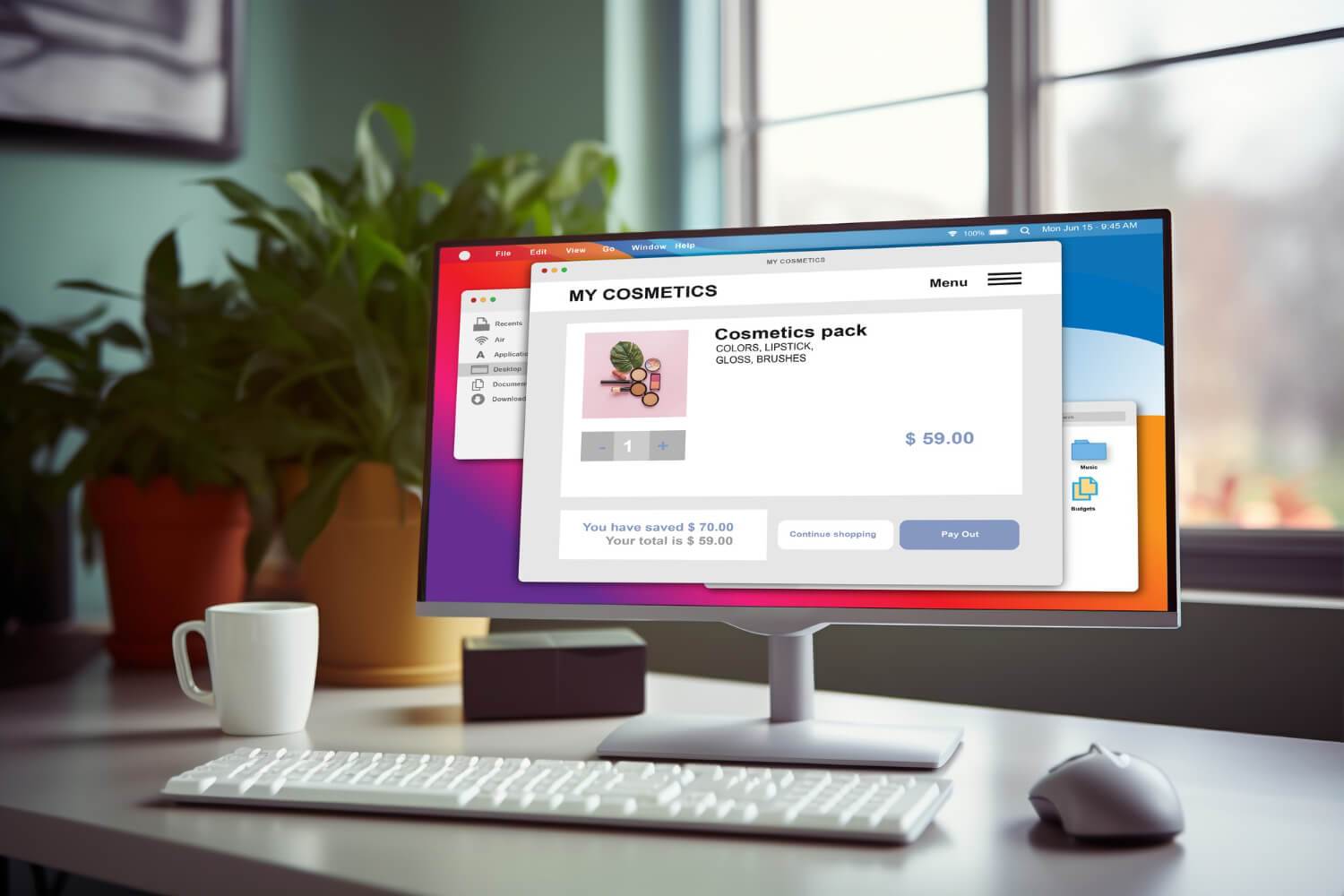Starting an eCommerce business is an exciting venture that has the potential for significant returns and freedom to work from anywhere. However, it’s not without its challenges.
The eCommerce landscape is highly competitive, and to stand out, you’ll need more than just a good idea; you’ll need a solid strategy. In this comprehensive guide, we’ll walk you through the key steps to start your eCommerce business successfully.
Market Research and Business Planning
The first and foremost step in starting an eCommerce business is identifying a market need. While it might be tempting to dive right into product sourcing and website development, understanding your target audience and market will give you a competitive edge.
Utilize tools like Google Trends, keyword research, and social media to identify market gaps or trending products.
After you’ve identified your niche, you should create a business plan outlining your mission, vision, and financial projections. A business plan is crucial for securing funding and keeping your business on track.
Legal Requirements and Documentation
Before you start selling, you’ll need to legalize your business. This includes:
Registering your business name
Obtaining a federal Employer Identification Number (EIN)
Registering for state and local taxes
Getting the necessary permits and licenses
Drafting a Terms & Conditions and Privacy Policy for your website
It’s advisable to consult a legal expert to ensure all your bases are covered.
Selecting the Right eCommerce Platform
Your eCommerce platform serves as the backbone of your online store. It’s crucial to choose a platform that fits your business needs and skill level. Some popular options include Shopify, WooCommerce, and Magento. Each platform has its own set of features, costs, and learning curves, so take time to evaluate which is the best fit for your business.
Product Sourcing and Inventory Management
Once you’ve laid the groundwork, you’ll need to source products to sell. There are multiple sourcing options including manufacturing, dropshipping, and wholesaling. Each has its pros and cons:
Manufacturing: You control quality but incur higher costs and time investment.
Dropshipping: Lower upfront cost, but less control over inventory and shipping.
Wholesaling: Bulk purchasing can offer cost advantages but requires significant storage space.
Effective inventory management is essential to avoid stock-outs or overstock situations, which could hurt your cash flow.
Crafting a User-Friendly Website
Now that your backend operations are set up, you’ll need to focus on the customer-facing side. Your website should be visually appealing and user-friendly. High-quality images, concise product descriptions, and a smooth checkout process are a must.
Implementing a Marketing Strategy
After your website is up and running, the next step is driving traffic. This is where your marketing strategy comes into play. Some effective methods to consider are:
Search Engine Optimization (SEO): Optimize your website to rank higher on search engine result pages.
Social Media Marketing: Leverage platforms like Instagram, Facebook, and Twitter to connect with your audience.
Email Marketing: A well-crafted email campaign can be an excellent tool for customer retention.
Pay-Per-Click Advertising: Use PPC campaigns for immediate traffic and sales.
Metrics and Analytics
Monitoring your business’s performance is crucial for long-term success. Tools like Google Analytics can provide valuable insights into customer behavior, conversion rates, and more.
Starting an eCommerce business involves multiple steps, from market research and legal formalities to choosing the right platform and implementing a robust marketing strategy. While the process may seem overwhelming, each step is crucial for the success of your venture. By taking a systematic approach, you can not only launch your eCommerce store but also sustain it successfully in the long run.
Customer Service and Relationship Management
One often-overlooked aspect of running a successful eCommerce business is customer service. No matter how good your products are or how user-friendly your website is, you’re bound to encounter issues such as shipping delays, product defects, or customers requiring assistance.
Invest in a customer relationship management (CRM) system to track customer interactions, manage complaints, and analyze customer behavior. Having dedicated channels like a toll-free number, chat support, and a helpdesk email will enhance customer satisfaction and trust.
Scaling Your Business
Once your eCommerce business is up and running smoothly, you might consider scaling operations. Scaling doesn’t necessarily mean increasing your product line (although that is an option). You can also scale by:
Entering new markets, either geographically or demographically.
Introducing subscription models for recurring revenue.
Collaborating with complementary brands for bundled offers.
However, scaling brings its own set of challenges like increased operational complexity, greater customer service demands, and higher marketing costs. Prepare for these challenges in advance by optimizing your existing processes, strengthening your supply chain, and possibly even building a team to handle increased responsibilities.
Cybersecurity
In today’s digital age, cybersecurity should be a top priority for any online business. A single breach can not only cost you financially but also severely damage your reputation. Ensure your eCommerce platform is secure and compliant with standards like the Payment Card Industry (PCI) Data Security Standard. Regularly update your system and train your staff on best practices to safeguard against cyber threats.
Continual Learning and Adaptation
The eCommerce landscape is ever-changing, with new technologies, consumer preferences, and market dynamics emerging frequently. Stay updated on industry trends and continually adjust your strategies accordingly. Being adaptive is the key to long-term success.
Starting an eCommerce business is not a sprint; it’s a marathon. While setting up your online store is a significant milestone, the real work starts afterward. From managing day-to-day operations and customer service to executing marketing campaigns and scaling your business, each phase requires thorough planning and execution. The competition in eCommerce is stiff, but with the right strategies and relentless execution, you can carve out your own success story.
Whether you’re looking to create a side hustle or build a full-scale operation, the opportunities in eCommerce are plentiful. However, the road to success is fraught with challenges that require smart decisions and constant learning. If you follow the principles laid out in this comprehensive guide, you’ll be well-equipped to navigate these challenges and establish a thriving eCommerce business.
Which are most known 25 eCommerce Platforms?
The eCommerce landscape is filled with a multitude of platforms catering to various needs, from small-scale startups to large enterprises. Here are the 25 most known eCommerce platforms, each with its own unique features and benefits:
For Small to Medium Businesses
Shopify: Known for its user-friendly interface and ease of setup. Excellent for small to medium businesses.
WooCommerce: A WordPress plugin that allows for a great deal of customization but requires some technical skills.
BigCommerce: Offers built-in features and scalability, ideal for medium to large enterprises.
Wix eCommerce: Part of the Wix website builder, good for small businesses with simple needs.
Squarespace: Known for beautiful design templates and is very user-friendly.
Magento Open Source: A free version of Magento that’s highly customizable, but requires a developer.
PrestaShop: Offers both a cloud-hosted and self-hosted version, known for strong community support.
Weebly: Known for its drag-and-drop interface; good for small businesses or individual sellers.
OpenCart: An open-source platform that’s best for those with some web development skills.
3dcart: Offers a range of features tailored for SEO and online marketing.
For Large Enterprises
Magento Commerce: The enterprise-level version of Magento, known for its scalability and customization options.
Salesforce Commerce Cloud: A cloud-based solution focused on creating unique customer experiences.
SAP Commerce Cloud: Known for its B2B capabilities, although it also supports B2C operations.
Oracle Commerce: Provides a range of solutions including cloud service, on-premise, or hybrid models.
IBM Websphere: Aimed at large enterprises needing a robust and highly customizable solution.
Specialized or Niche Platforms
Volusion: Focused on providing solutions specifically for eCommerce entrepreneurs.
osCommerce: One of the oldest open-source platforms with a large community of users.
Jumpseller: Aimed at businesses looking to sell internationally with multi-currency support.
X-Cart: An open-source shopping cart software with a range of built-in features.
Neto: An Australian-based eCommerce platform known for its B2B and multi-channel capabilities.
Ecwid: Allows you to add a store to any website and is particularly effective for small businesses.
Shopware: A PHP-based, feature-rich platform that’s gaining traction in Europe.
Lightspeed: Offers solutions that integrate in-store POS with eCommerce sites.
Big Cartel: Aimed at artists and makers, offering simple and visually appealing templates.
Miva: Known for its high level of customization and quality customer service.
Each of these platforms has its own set of features, pricing models, and levels of customization, so your choice should be aligned with your business needs, your technical skills, and your long-term plans.









